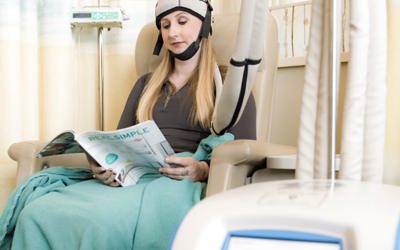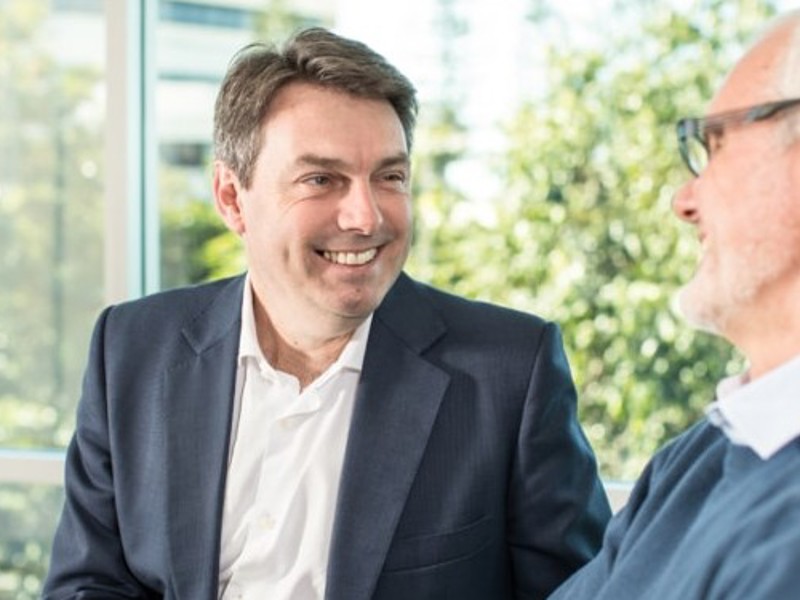
Everything you need to know about scalp cooling
Brachytherapy is a special form of radiation therapy where a radioactive source is placed beside or inside the tumour. The term brachytherapy was derived from the Greek word “brachy” meaning “short-distance”. Brachytherapy is commonly used, but not limited to, the effective treatment of gynaecological, prostate, breast and skin cancers.
Brachytherapy for prostate cancer, also known as LDR brachytherapy, is a very targeted treatment which uses low energy radiation emmitted by Iodine-125. The seeds, which are no larger than an uncooked grain of rice, are strategically injected into the prostate to treat the cancer over a period of three to four months.
Seed brachytherapy offers comparable cure results to both radical prostatectomy (including robotic surgery) and external beam radiation treatment. The choice between which treatment option is most suitable for you will depend on the management of side effects in consultation with your oncologist.
Focal brachytherapy is using the same technique, however is a highly targeted technique as it places the radioactive source into only the tumour itself instead of the whole prostate, preserving the rest of the prostate gland.
The benefits of brachytherapy compared with other forms of radiation treatment include:
Ability to deliver high localised dose
Rapid fall off of dose
Ability to sculpt dose to shape of tumour or organ of interest
A volume study is performed about one month before your implant to obtain data required for the brachytherapy team to plan your individualised conformal treatment. This involves identifying the prostate using trans-rectal ultrasound (TRUS), and acquiring multiple detailed images through the prostate, whilst identifying critical structures such the urethra, rectum and bladder.
The procedure can be performed under anaesthetic or through preparing your oral medication. The procedure will take about one hour, generally allowing you to go home on the same day.
Your implant will typically take about one hour. You will be under local anaesthetic with sedation or under general anaesthetic. Using TRUS, the oncologist will image through your prostate to replicate the images taken at your volume study. This allows the oncologist and urologist to accurately inject the seeds through the perineum into the prostate as your plan dictates. On average patients are injected with between 80-100 seeds using 20-30 needles.
Depending on your recovery, patients will generally stay overnight with catheter in place to manage urine flow and flush the bladder. Patients should avoid lifting or strenuous activity for three to five days.
Cure rates equivalent to surgery and external beam radiation
Minimally invasive procedure completed within an hour, requiring minimal hospital stay
Incontinence is extremely rare
Impotence rates are the vicinity of 20 to 30%
Between one and six months following implantation it is common to experience the need to pass urine more frequently and your urinary flow may reduce. This occurs because there is a lot of swelling of prostate. In some men (less than 5%) it may be necessary to insert a temporary catheter into the bladder. Sometimes you will be recommended to take certain prescribed medications for the first few months after the implant to minimise flow problems
Although there are no regulatory requirements to isolate you after implantation, we do advise that for two months after the implantation you minimise contact with children under the age of three and pregnant women
Any prostate surgery following seed brachytherapy can be associated with increased risk
Blood in your urine, increased frequency, burning, dribbling and blockage can occur after seed implant. This is due to inflammation in the urethra, swelling of the prostate and irritation of the bladder from the radiation treatment.
One major concern amongst men in choosing treatment for prostate cancer is sexual function. Unfortunately decreased potency and firmness is associated with curative treatment, however this is more common after surgery than after seed brachytherapy.
Less likely, but not uncommon some men may have diarrhoea or loose bowel motions. This can be managed by consuming a bland, low residue diets.
Please note that side effects do vary between individuals and usually last for three to six months after implantation.

The biggest concern for patients and their families is radiation safety after the implant. Most of the radiation is absorbed by your body, and you would not be discharged unless these were at safe levels. Nevertheless, before leaving hospital, you will be given a medical alert card. In the event of a medical emergency requiring hospitalisation (i.e. a car accident), this card will alert medical officers of your seed implantation.
Picking up a child or hugging a pregnant woman is fine. However, you should avoid prolonged contact for the first two months. For instance:
Avoid sitting a child on your lap. Sitting beside you is fine
Keep about six feet from pregnant women (or potentially pregnant women)
Use a condom during intercourse. Your body fluids are not radioactive and what you touch is not radioactive. The use of a condom is recommended for the very low risk of a seed being passed and it is not uncommon for traces of blood to be found in your discharge.
Four weeks after your implant, you will be required to have CT scan. This will allow the brachytherapy team to identify all the seeds implanted to calculate the dose given your prostate. The timing of this scan is to allow for reduction in swelling of the prostate resulting from your implant.
The content on the Icon Cancer Centre website is for informational purposes only and should not be considered medical advice. It is not a substitute for consultation with a qualified medical practitioner. For personalised medical guidance, please consult with your GP or another qualified healthcare provider.
Discover our comprehensive collection of content designed to inform, support, and guide you through every aspect of cancer care. From the latest news and updates to personal patient experiences and educational resources, these materials provide valuable insights to help you better understand cancer, treatment options, and the journey ahead.